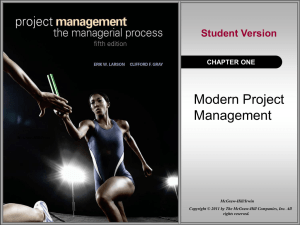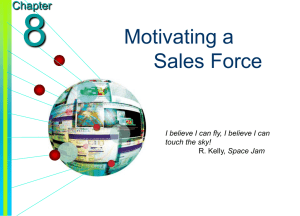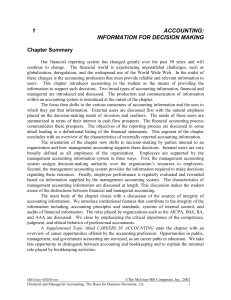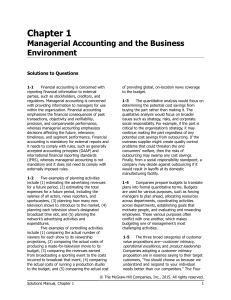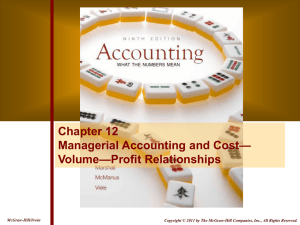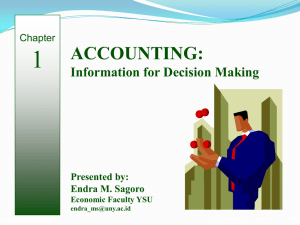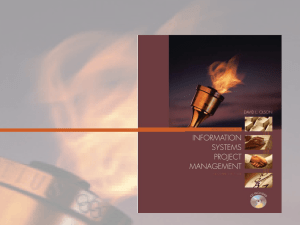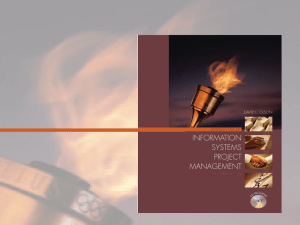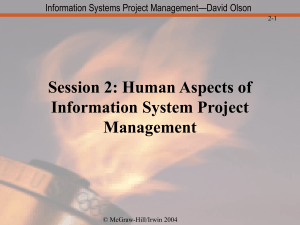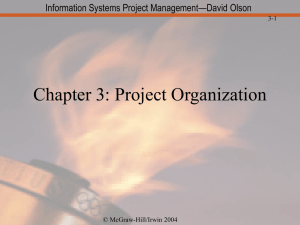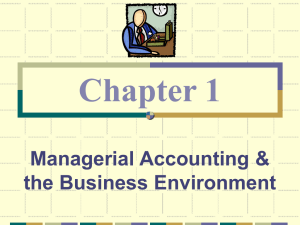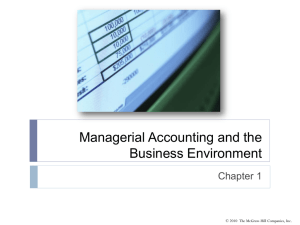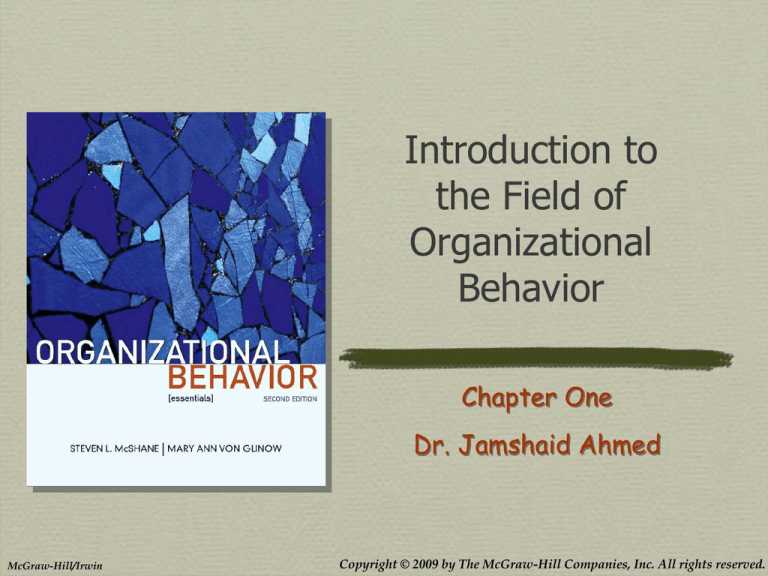
Introduction to
the Field of
Organizational
Behavior
Chapter One
Dr. Jamshaid Ahmed
McGraw-Hill/Irwin
Copyright © 2009 by The McGraw-Hill Companies, Inc. All rights reserved.
Learning Objectives
1.
Explain what organizational behavior means.
2.
Summarize the research methods of organizational
behavior.
3.
Identify the potential advantages of organizational
behavior knowledge.
4.
Explain key events in the history of organizational
behavior.
5.
Describe how focusing on the human element can
contribute to organizational and managerial
effectiveness.
6.
Understand how a person develops organizational
skills.
1-2
The Meaning of Organizational Behavior
Organizational behavior (OB) is
the study of human behavior in the workplace,
the interaction between people and the organization,
and the organization itself.
Organizational behavior’s major goals are to
explain, predict, and control behavior.
1-3
Benefits of Studying Organizational Behavior
Develop skills to function effectively in the
workplace.
Grow personally through insight into human
behavior.
Enhance overall organizational effectiveness
Sharpen and refine
common sense.
1-4
Key Developments in OB History
The Human Relations Movement
Based on belief that managerial practices, morale, and
productivity are strongly linked and that the proper
working environment enhances worker capabilities.
Douglas McGregor
—
Theory X
– Managers assume people dislike work,
avoid responsibility, lack ambition,
and need close supervision.
—
Theory Y
– Managers assume people enjoy
work, accept responsibility,
are innovative, and are
self-controlling.
1-5
1.
Employment security.
5.
2.
High standards in selecting
personnel.
6.
3.
4.
Extensive employee training.
Reduction of status
differences between higher
Key Managerial Practices
of Successful
management
and other
Extensive use of selfemployees.
Organizations
managed teams and
decentralized decision
7. Information sharing among
making.
managers and other
workers.
Comparatively high
compensation based on
8. Promotion from within.
performance.
EXHIBIT
1-1
Source: Jeffery Pfeffer, The Human Equation (Boston, MA: Harvard Business School Press, 1998),
pp. 64–98; Joanne Cole, Interview with Jeffery Pfeffer: “Putting People First,” HRFOCUS, April 1998,
pp. 11–12; Pfeffer, “Producing Sustainable Competitive Advantage through the Effective
Management of People,” Academy of Management Executive, February 1995, pp. 64–65.
1-6
Organizational Behavior and Organizations
Organizational behavior
The study of what people think, feel,
and do in and around organizations
Organizations
Groups of people who work
interdependently toward some
purpose
—
—
—
Structured patterns of interaction
Coordinated tasks
Have common objectives (even if
not fully agreed)
John Lassiter
Chief Creative Officer
of Pixar and Disney
1-7
Why Study Organizational Behavior?
OB theories help you to make sense of the
workplace
Question and rebuild your personal theories for work
Important -- much of our time is in organizations
OB provides knowledge/tools to work with others
Helps you to get things done
OB improves an organization’s financial health
1-8
Intellectual Capital
Human
Capital
Knowledge that people possess and
generate
Structural Capital
Knowledge captured in systems and
structures
Relationship
Capital
Value derived from satisfied customers,
reliable suppliers, etc.
1-9
Organizational Learning Processes
KNOWLEDGE
ACQUISITION
Extracting information
and ideas from its
environment as well
as through insight
KNOWLEDGE
SHARING
Distributing
knowledge
throughout the
organization
KNOWLEDGE
USE
Applying knowledge
to organizational
processes in ways
that improves the
organization’s
effectiveness
Examples in practice
Hiring skilled staff
Posting case
studies on intranet
Giving staff
freedom to try out
ideas
1-10
Organizational Memory
The storage and preservation of intellectual
capital
Retain intellectual capital by:
Keeping knowledgeable employees
Transferring knowledge to others
Transferring human capital to structural capital
Successful companies also unlearn
1-11
High Performance Work Practices (HPWPs)
HPWPs are internal systems and structures that are
associated with successful companies
1. Employees important for competitive advantage
2. Value of employees increased through specific
practices.
3. Maximum benefit when org practices are bundled
1-12
High Performance Work Practices
No consensus, but HPWPs include:
Employee involvement and work autonomy (and their
combination as self-directed teams).
Employee competence (training, selection, etc.).
Performance-based rewards
1-13
Stakeholders: Values and Ethics
We rely on values and ethics to
prioritize stakeholder interests
Values
Stable, evaluative beliefs, guide
preferences for outcomes or
courses of action in various
situations
Ethics
Moral principles/values, determine
whether actions are right/wrong
and outcomes are good or bad
Lockheed Martin
1-14
Stakeholders and CSR
Stakeholder perspective includes
corporate social responsibility (CSR)
Benefit society and environment
beyond the firm’s immediate
financial interests or legal
obligations
Organization’s contract with society
Triple bottom line
Economy, society, environment
Lockheed Martin
1-15
Types of
Individual Behavior
Introduction to the Field of
Organizational Behavior
McGraw-Hill/Irwin
Copyright © 2009 by The McGraw-Hill Companies, Inc. All rights reserved.
Types of Individual Behavior
Task Performance
Organizational
Citizenship
Goal-directed behaviors under
person’s control
Performance beyond the required job
duties
more
1-17
Types of Behavior in Organizations
(con’t)
Counterproductive
Work Behaviors
Voluntary behavior that potentially
harms the organization
Joining/staying with
the Organization
Goal-directed behaviors under
person’s control
Maintaining Work
Attendance
Attending work at required times
1-18
Contemporary
Challenges
for Organizations
Introduction to the Field of
Organizational Behavior
McGraw-Hill/Irwin
Copyright © 2009 by The McGraw-Hill Companies, Inc. All rights reserved.
Globalization
Economic, social, and cultural connectivity with
people in other parts of the world
Higher connectivity (and interdependence) due to
better information technology and transportation
systems
Globalization has many effects on organizations,
as discussed throughout this book
e.g., leadership, diversity, conflict, org structures
1-20
Dynamics of Behavior in Organizations
McGraw-Hill/Irwin
Copyright © 2009 by The McGraw-Hill Companies, Inc. All rights reserved.
Dynamics of Behavior in Organizations
Managers need to understand the way individuals & groups act
Employees and managers bring their individual
differences to work each day
Differences in attitudes, values, personality, and
behavior influence
how people interpret an assignment,
whether they like to be told what to do
how they handle challenges
how they interact with others
Manager’s Challenge: Quick Eagle Networks
1-22
Dynamics of Behavior in
Organizations
Attitudes
Personality
Perception
Learning
Stress management
1-23





